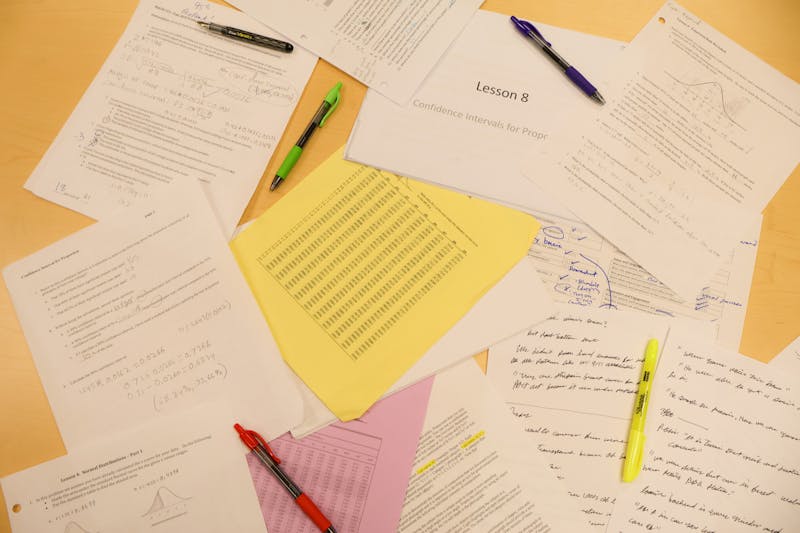The 2022 midterm elections mark the halfway point of President Joe Biden’s first term in office, meaning the road to the 2024 presidential election is fast approaching.
Both parties have crucial decisions to make within the next two years that will decide whether they control the Oval Office on Jan. 20, 2025.
For Democrats, it is normally expected for the sitting president to run for a second term, but this matter remains in question for Biden. Questions about his mental acuity and fitness to serve have only grown since he entered office.
“His energy level, while impressive for a man of his age, is not what it was,” Peter Baker of The New York Times said in July.
While Biden has voiced his intentions to run in 2024 as recently as Oct. 21, he has yet to finalize his plans.
“I have not made that formal decision, but it’s my intention – my intention to run again,” he said in an interview with MSNBC’s Jonathan Capehart.
Should Biden remove himself from the race in 2024, the conversation shifts to Democrats who would eye his seat.
Department of Transportation Secretary Pete Buttigieg has pondered running. Since receiving the appointment, he has worked on efforts involving infrastructure and electric vehicles, including time spent on the six-day “Building a Better America” tour to promote the Biden administration’s projects.
Buttigieg, too, has not given a direct answer. He called the decision “above [his] pay grade” in an interview with CNN’s Chris Wallace on Oct. 30.
As the sitting vice president, Kamala Harris would be in a bizarre position if Biden decided not to run. Her only remarks about the 2024 election have involved President Biden’s decision, but she has not revealed her plans if he did not run.
“The president has been very clear that he intends to run again. And if he does, I will be running with him proudly,” Harris said on NBC’s “Meet the Press.”
While California Gov. Gavin Newsom claims he has “subzero interest” in a presidential run, his actions suggest differently. Newsom entered the national conversation due to his strict governance during the COVID-19 pandemic and survival of Larry Elder’s recall effort in 2021.
He has also stepped into Republican states to denounce their leaders and promote California’s policies.
Newsom’s most direct action was a commercial he aired against Gov. Ron DeSantis in Florida. While criticizing DeSantis, he said, “Freedom is under attack in your state … I urge all of you in Florida to join the fight or join us in California where we still believe in freedom.”
The Republican Party’s 2024 trajectory rests at the mercy of former President Donald Trump.
Despite ongoing controversies surrounding the FBI’s search of Mar-a-Lago and his involvement in the Jan. 6, 2021, Capitol Building riot, his popularity remains strong among Republicans. Per Axios, 59% of the party wants him to be the nominee in 2024, and Trump also has visions of running.
“In order to make our country successful, safe and glorious again, I will probably have to do it again,” Trump said at an event in Robstown, Texas.
Behind Trump, Ron DeSantis comfortably holds runner-up. He is characterized as a younger version of Trump for his lax mitigation measures during the pandemic, his frequent disputes with members of the media and his conservative policies.
DeSantis, according to Opinion Contributor Kristin Tate of the Hill, is distinguishable from Trump because he “offers all the upsides of Trump — a populist conservative agenda and bold, fighting spirit — without the downsides — 3 a.m. Twitter fights and lackluster follow-through.”
DeSantis has not shown his cards for 2024 despite pressure from Congressman Charlie Crist during a gubernatorial debate on Oct. 24. After Crist criticized his ambiguity, DeSantis dodged his question and said, “the only worn-out, old donkey I’m looking to put out to pasture is Charlie Crist.”
If Trump and DeSantis both enter the presidential race, it will engender a clash within the party between two of its most formidable leaders.
While DeSantis is known for his political and communicative savviness, Trump carries an aura that no Republican has matched since his political emergence in 2015.
Unless a candidate who loses in a primary pursues a third-party effort, the race will narrow to two candidates no later than the summer of 2024.
Democrats and Republicans must resolve uncertainties about their parties’ presidential favorites, and as the results from the 2022 midterms are finalized, the 2024 campaign cycle will begin.


The Slate welcomes thoughtful discussion on all of our stories, but please keep comments civil and on-topic. Read our full guidelines here.